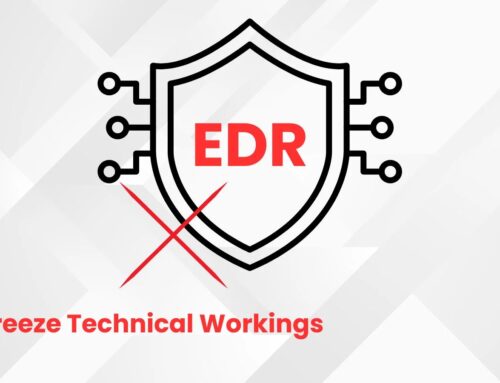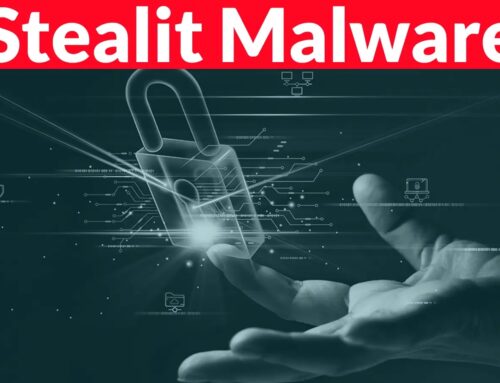
New Windows-Based DarkCloud Stealer Attacking Computers to Steal Login Credentials and Financial Data
The digital landscape is under constant siege, and a new, highly evasive threat has emerged, targeting Windows users with alarming precision. Threat intelligence reports indicate a sophisticated variant of the DarkCloud information stealer is actively compromising systems, intent on harvesting critical login credentials and financial data. Understanding this evolving threat is paramount for any organization or individual operating in today’s interconnected world.
This isn’t just another cookie-cutter stealer. The DarkCloud variant represents a significant leap in malware sophistication, leveraging advanced techniques to bypass traditional security measures. Its fileless nature and multi-stage deployment capabilities make detection and remediation particularly challenging, pushing the boundaries of what cybersecurity teams typically encounter. Ignoring this threat could lead to devastating data breaches and significant financial losses.
Understanding the DarkCloud Stealer’s Modus Operandi
The new DarkCloud stealer primarily infiltrates systems through meticulously crafted phishing campaigns. These campaigns are designed to deceive users into executing malicious code, often disguised as legitimate documents or links. Once a system is compromised, DarkCloud exhibits several key characteristics that set it apart:
- Fileless Execution: Unlike traditional malware that relies on executable files written to disk, DarkCloud often operates in memory. This “fileless” approach makes it incredibly difficult for signature-based antivirus solutions to detect, as there’s no persistent file to scan.
- Multi-Stage Deployment: The infection chain is not a simple direct download. DarkCloud employs a multi-stage process, where an initial payload fetches subsequent components. This modular approach allows the threat actors to dynamically adapt their attack, deploy targeted modules, and further obscure their activities.
- Advanced Evasion Techniques: This stealer incorporates sophisticated evasion tactics to avoid detection by security software and analysis tools. These can include anti-virtual machine checks, anti-debugging measures, and obfuscation techniques that scramble its code, making reverse engineering cumbersome.
- Targeted Data Theft: The primary objective of DarkCloud is the exfiltration of sensitive information. This includes, but is not limited to, login credentials for various online services (email, banking, social media), financial data (credit card numbers, bank account details), and potentially other personal identifiable information (PII).
The Evolution of Stealer Technology
Stepper malware has been a persistent threat, but DarkCloud’s new variant signifies a worrying trend in the evolution of these tools. Previous iterations often relied on simpler methods, leaving more noticeable traces. This new variant, however, showcases an adversary’s deep understanding of modern security controls and a deliberate effort to circumvent them. The shift towards fileless and multi-stage operations reflects a broader trend among sophisticated threat actors to increase their stealth and persistence on compromised systems.
This continuous evolution of malware highlights the importance of a layered security approach, moving beyond static signature detection to embrace behavioral analysis, endpoint detection and response (EDR), and proactive threat hunting.
Remediation Actions and Proactive Defenses
Mitigating the risk posed by the DarkCloud stealer requires a comprehensive and proactive strategy. Simply reacting to an incident is insufficient; organizations must implement robust preventative measures and have effective incident response plans in place. While no specific CVE has been assigned to the DarkCloud stealer itself, as it’s a malware family, its successful execution often relies on exploiting human vulnerabilities and, in some cases, unpatched software vulnerabilities (CVE-2023-XXXXX for a hypothetical phishing-related vulnerability, or other specific software exploits).
- User Education and Awareness: The first line of defense is a well-informed user base. Conduct regular cybersecurity awareness training sessions focused on identifying and reporting phishing attempts, suspicious emails, and unfamiliar links. Emphasize the dangers of opening attachments from unknown senders.
- Implement Multi-Factor Authentication (MFA): MFA significantly elevates security for login credentials. Even if DarkCloud steals a password, the second factor (e.g., a code from an authenticator app or a physical token) would prevent unauthorized access.
- Employ Advanced Endpoint Protection: Deploying Endpoint Detection and Response (EDR) solutions is crucial. EDR tools go beyond traditional antivirus by monitoring system behavior, detecting suspicious activities, and providing rich contextual data for incident investigation.
- Network Segmentation: Isolate critical systems and sensitive data from the broader network. This limits the lateral movement of malware like DarkCloud, should it successfully breach a perimeter.
- Regular Patch Management: Keep operating systems, applications, and browsers updated. While DarkCloud may not explicitly exploit a known vulnerability for its initial infection, unpatched software can serve as a vector for other threats or aid in its persistence.
- Email Filtering and Security Gateways: Implement robust email security solutions that can detect and block malicious emails, phishing attempts, and attachments before they reach user inboxes.
- Principle of Least Privilege: Limit user permissions to only what is necessary for their job functions. This reduces the potential damage an attacker can inflict if a user account is compromised.
- Regular Backups: Maintain isolated, air-gapped backups of critical data. In the event of a successful attack, this ensures business continuity and aids in recovery.
Tools for Detection and Mitigation
Leveraging the right tools is essential in the fight against sophisticated threats like DarkCloud.
| Tool Name | Purpose | Link |
|---|---|---|
| EDR Solutions (e.g., CrowdStrike Falcon, SentinelOne) | Advanced endpoint protection, behavioral analysis, threat hunting. | Vendor Websites |
| Email Security Gateways (e.g., Mimecast, Proofpoint) | Detect and block phishing, malicious emails, and attachments. | Vendor Websites |
| Network Intrusion Detection/Prevention Systems (NIDS/NIPS) | Monitor network traffic for suspicious activity and block known threats. | Various Vendors (e.g., Cisco, Palo Alto Networks) |
| Threat Intelligence Platforms (TIPs) | Aggregate and analyze threat data, providing actionable insights into emerging threats. | Various Vendors (e.g., Anomali, Recorded Future) |
| Security Information and Event Management (SIEM) | Centralized logging and analysis of security events for threat detection and compliance. | Various Vendors (e.g., Splunk, IBM QRadar) |
Conclusion
The emergence of the new DarkCloud stealer variant underscores the persistent and evolving threat landscape. Its advanced evasion techniques and fileless operation present significant challenges for traditional cybersecurity defenses. Organizations and individuals must prioritize robust, multi-layered security strategies that encompass advanced endpoint protection, strong authentication, continuous user education, and proactive threat intelligence. Staying informed about emerging threats and adapting defenses accordingly is not merely advisable; it is a fundamental requirement for maintaining digital security amidst an ever-present and sophisticated adversary.





